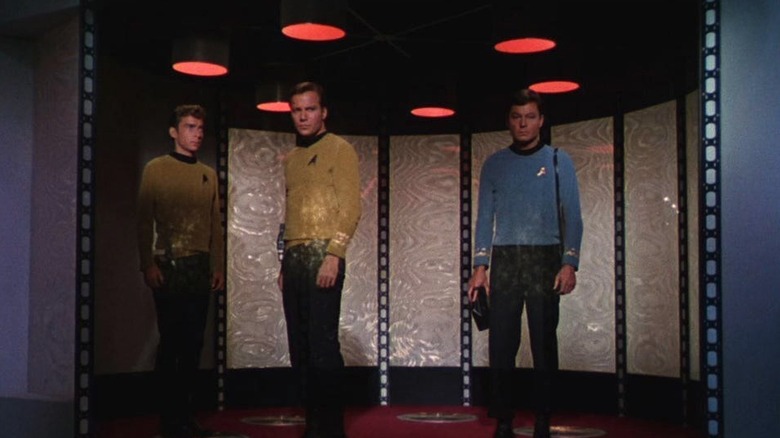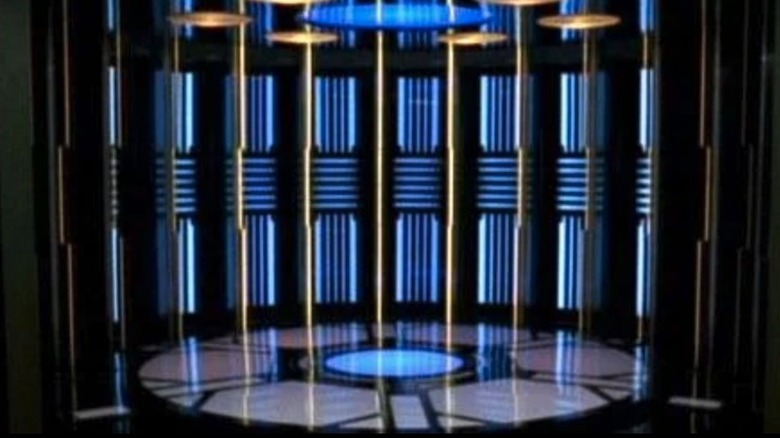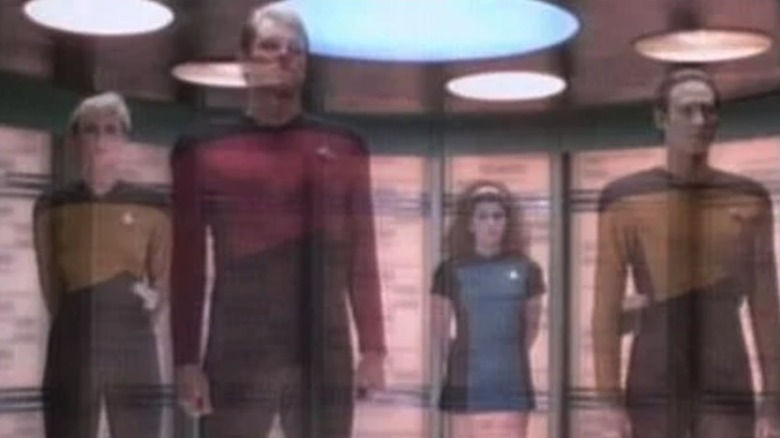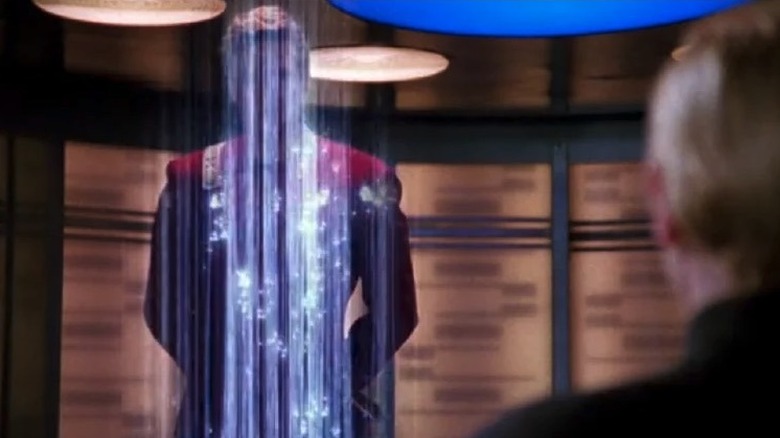How Star Trek's Transporter Effect Actually Worked
We may receive a commission on purchases made from links.
One of the first memories I have of adult television is watching the cast of the original "Star Trek" beaming down to a planet in the transporter. I don't know which episode it was, but I do remember asking my dad how they did that, and could we go to Disneyland that way. In the days of CGI characters and the ability to film entire movies and TV shows in front of a green screen, it's hard to remember what even a small effect like the "Star Trek" transporter conjured up in our brains. (I still think of it while driving through LA traffic.)
What I didn't know as a kid, and frankly, up until now was how the show created the effect. According to an article on Inverse, The Anderson Company (run in the 1960s by Darrel Anderson and Howard A. Anderson) created it in a very simple way, with "aluminum powder and old-school compositing."
"Here's how it worked: First the person or persons being transported were filmed standing in position. Then they stepped out of frame while the camera captured an empty set. What was then needed was a "mask" of the figures being beamed — essentially an outline of them. A further element required was the glittering or beam effect (this is where the aluminum powder came in). It was photographed separately by dropping the powder from above and lighting it with an intensive light against a black background."
Beaming Ourselves Up
It might seem primitive these days, but someone had to come up with it. Maybe you've even used something like this in your own home movies. A number of years ago (via Vice), PBS Digital Studio's Joey Shanks showed fans how to create this effect by themselves for their own films. I highly recommend watching the video. It's really cool! It also explains how the effects changed over the years. For instance, they took out the freeze frame effect once the feature films were being made, and they added light beam effects to add drama later on.
Shanks told Vice:
"From my research it started with them using aluminum silver shavings, and just dropping it in front of the camera, backlighting it with a really sharp spotlight and shooting it at 120 frames-per-second and then compositing it into the scene. Then I learned that they started messing around with Alka Seltzer, with glitter, a lot of different forms of liquids and particles in tanks. Just to show the audience this technique it's super simple — even getting a lava lamp that has little glitter particles, you can pretty much create the exact same look they did originally."
Could We Ever Have a Real Transporter?
The effect is super cool, but we can't do that yet, obviously. Will we ever be able to? "Star Trek" has certainly influenced technology with things like flip phones and touch screens. StarTrek.com had an article in 2014 about a discovery that might bring us closer to a real life transporter — in theory. In an experiment at Delft University in the Netherlands, scientists were able to transport a few matter particles three meters. It's not exactly sending a red shirt down to a planet as cannon fodder, but it's pretty cool. The article goes into detail about how it all works (and I'm no scientist, fascinated as I am by it all), but in basic terms, you have to know all the tiny details about something is built and calculate how to move it over a distance, from the atoms out. The atoms have to be rebuilt in exactly the same way somewhere else. Here is a little info from the article to help give you an idea of what we're talking about:
"'If you believe we are nothing more than a collection of atoms strung together in a particular way, then in principle it should be possible to teleport ourselves from on place to another,' says Professor Ronald Hanson, who led the experiment at Delft. Such a day remains far in the future for sure, but Hanson's statement does suggest one further snag that could complicate travel by Transporter — are we just a collection of atoms?"
I spoke to Rod Roddenberry, son of "Star Trek" creator Gene Roddenberry, President of Roddenberry Entertainment and executive producer of "Star Trek: Discovery" and "Star Trek: Picard" about his thoughts on the transporter technology. He said:
"I don't fully recall my first memory of the Transporter technology on screen, but I remember thinking that it was certainly amazing. Transporters represented our control of the atom, similar to the replicators, which allowed us to rearrange atoms in any order thereby creating anything whether it be sustenance, books for education, or rare minerals and metals. This technology would change our perceptions of value and we would no longer see value in material items. Having this ability to create literally anything would over time realign our thinking to find value in more immaterial concepts such as thoughts and ideas. My hope is we will see a future where we recognize and revere what is truly most unique in our world which are the thoughts and ideas of our fellow human beings."
'A Murdering Clone-Maker'
I also spoke to planetary physicist Dr. Kevin Grazier, science consultant on a number of television series and feature films, and co-author of the "Hollyweird Science" series of popular science books who explained:
Even if you could store the titanic amounts of energy needed to transport a person, perform the necessary data management and storage, and overcome quantum effects like the Heisenberg Uncertainty Principle, I still think that if it was possible to place a carbon atom here, a calcium atom there — all in precise relative positions — that the all those atoms would bond in exactly the same way as they were in the original source material. So, I think that if you stepped on one transporter pad, what would appear on the other pad is a huge puddle of organic sludge with the identical bulk chemical composition as the now-deceased Captain Busch. [Author's note: That's me and yikes!]
The transporter is great narrative tool to keep writers from having to spend time landing their starship or dispatching a shuttle to a planet week to week, but I'm with Doctor McCoy in believing that the transporter is, at best, a murdering clone-maker.
By the way, Dr. Grazier does expand on the energy and data storage calculations in Chapter 7 of the first "Hollyweird Science" book.
So, would you want to have one of these? Do you think we'll ever get there? Let us know @slashfilm!



